When you or someone you love is diagnosed with idiopathic pulmonary fibrosis (IPF), the list of questions grows fast. What does this mean? How will it change daily life? And what about this drug your doctor mentioned-pirfenidone? You’re not alone in wondering how it works, what to expect, and whether it’s the right choice. This guide cuts through the noise. It gives you clear, practical facts about pirfenidone-what it does, how to take it, what side effects to watch for, and how it fits into real life with IPF.
What Is Pirfenidone and Why Is It Used?
Pirfenidone is a prescription medicine approved to treat mild to moderate idiopathic pulmonary fibrosis (IPF). IPF is a serious lung disease where scar tissue builds up in the lungs over time. This scarring, called fibrosis, makes it harder to breathe and reduces how much oxygen your body can use. There’s no cure for IPF, but pirfenidone is one of only two drugs proven to slow down how fast the scarring progresses.
It doesn’t reverse damage already done. It doesn’t make you feel better right away. But studies show that people taking pirfenidone are less likely to have a sudden, severe drop in lung function compared to those not taking it. In one major trial, patients on pirfenidone had a 30% lower risk of disease progression over a year. That might not sound dramatic, but for someone with IPF, slowing decline by even a few months can mean more time doing things that matter-walking the dog, playing with grandchildren, taking a breath without gasping.
Pirfenidone is not a chemotherapy drug. It’s not a steroid. It’s an antifibrotic, which means it works at the cellular level to reduce the signals that cause scar tissue to form. It was first approved by the FDA in 2014 and has since been used by tens of thousands of patients worldwide.
How Do You Take Pirfenidone?
Pirfenidone comes in capsule form. Most people take it three times a day, with food. That’s non-negotiable. Taking it on an empty stomach increases the chance of nausea, dizziness, or stomach upset-side effects that can make people stop the drug altogether.
The usual starting dose is one 267 mg capsule three times a day. After one week, your doctor will likely increase it to two capsules three times a day. After another week, you’ll typically reach the full maintenance dose: three capsules three times a day, totaling 2,403 mg daily. That’s a lot of pills. Many patients find it easier to use a pill organizer and set phone reminders.
You can’t skip doses. If you miss one, take it as soon as you remember-but only if it’s within a few hours. If it’s close to your next dose, skip the missed one. Never double up. Too much pirfenidone at once can cause serious dizziness or vomiting.
It takes time to work. Most people don’t feel better in the first month. Some notice small improvements in stamina after three to six months. The goal isn’t to feel great-it’s to keep things from getting worse faster.
Common Side Effects and How to Manage Them
Side effects are common with pirfenidone, but they’re usually mild and improve over time. The three biggest ones are nausea, tiredness, and sensitivity to sunlight.
Nausea and stomach upset affect nearly half of users. Eating with every dose helps. Some people find ginger tea, crackers, or peppermint oil useful. If nausea lasts more than a week or is severe, talk to your doctor. They might adjust the timing of doses or prescribe a short-term anti-nausea medication.
Fatigue is another big one. You might feel more tired than usual, especially in the first few weeks. Don’t push through it. Rest when you need to. Many patients report energy levels improving after two to three months. If you’re exhausted all the time, check with your doctor-other causes like anemia or sleep apnea can worsen fatigue in IPF.
Sun sensitivity is serious. Pirfenidone makes your skin burn more easily. Even a short walk outside on a cloudy day can lead to a bad sunburn. You must wear broad-spectrum SPF 30+ sunscreen every day, even indoors if you’re near a window. Wear long sleeves, hats, and UV-blocking sunglasses. Avoid tanning beds completely. If you get a bad burn, stop the drug until your skin heals and talk to your doctor about whether to restart.
Less common side effects include dizziness, loss of appetite, and mild liver enzyme changes. Your doctor will order blood tests every month for the first six months to check your liver. If levels rise too high, they may pause or lower your dose.

What You Can’t Do While Taking Pirfenidone
There are a few things that can interfere with how pirfenidone works or make side effects worse.
- Don’t smoke. Smoking speeds up lung damage in IPF and makes pirfenidone less effective. If you smoke, quitting is the single most important thing you can do for your lungs.
- Avoid alcohol. Drinking while on pirfenidone increases the risk of liver problems. Even one drink a day can be risky.
- Don’t take other medications without checking. Some antibiotics, antidepressants, and seizure meds can interact with pirfenidone. Always tell every doctor or pharmacist you see that you’re taking it.
- Avoid caffeine-heavy drinks. Coffee, energy drinks, and strong tea can make dizziness worse. Stick to water, herbal teas, or low-caffeine options.
How Pirfenidone Fits Into Daily Life
Living with IPF means adapting. Taking pirfenidone adds another layer. But it doesn’t have to take over your life.
Many patients integrate it into their routine like brushing their teeth. Take it with breakfast, lunch, and dinner. Keep the pills next to your coffee maker or in the kitchen drawer. Use a weekly pill box with morning, afternoon, and evening slots.
Plan for side effects. If you feel dizzy, don’t drive until you know how your body reacts. Schedule your first few weeks at home. Let family or friends know you might need help with errands or chores.
Track your symptoms. Keep a simple notebook: “Day 12: Took pills with lunch. Felt tired after 2 p.m. No sunburn. Breathed easier walking to mailbox.” This helps you and your doctor see patterns. Did your cough improve? Did you sleep better? Small wins matter.
Stay connected. Join an IPF support group-online or in person. Talking to others who take pirfenidone helps you feel less alone. You’ll hear tips like “I use a humidifier at night” or “I take my last dose at 5 p.m. so I’m not up all night.”
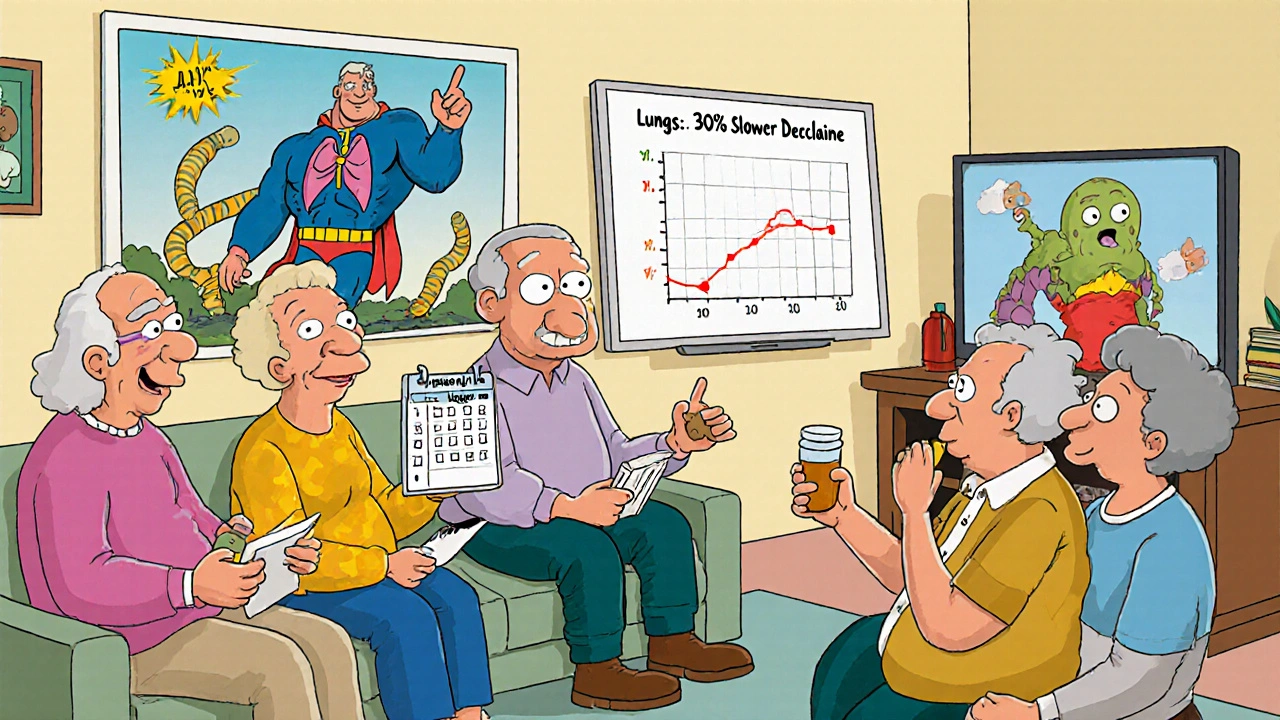
When to Call Your Doctor
You don’t need to panic over every little change. But there are red flags that mean you should call right away:
- Yellowing of skin or eyes (sign of liver trouble)
- Dark urine or pale stools
- Severe rash or blistering skin
- Difficulty breathing that’s worse than usual
- Swelling in legs or ankles
- Thoughts of self-harm or severe depression
If you’re unsure, call. Better safe than sorry. Your care team expects these questions. They’ve helped hundreds of patients through this.
What Happens If Pirfenidone Doesn’t Work?
Not everyone responds the same way. Some people slow down significantly. Others still decline, but more slowly. A small number see little to no change.
If pirfenidone isn’t working after six months, your doctor may consider switching to nintedanib, another approved IPF drug. Some patients take both together under close supervision. Others focus on pulmonary rehab, oxygen therapy, or lung transplant evaluation.
It’s not failure if pirfenidone doesn’t stop IPF completely. It’s about buying time-time to plan, time to enjoy, time to be with loved ones. Even a small delay in decline can be meaningful.
Final Thoughts: Real Hope, Real Challenges
Pirfenidone isn’t a miracle drug. It doesn’t come with a guarantee. But for many people with IPF, it’s the best tool they have to hold onto their independence a little longer.
The side effects are real. The pill burden is heavy. The sun sensitivity is annoying. But the alternative-doing nothing-is often worse.
If you’re considering pirfenidone, ask your doctor: “What’s the chance this will help me?” and “What’s the worst that could happen if I take it?” Then weigh those answers against your goals. Do you want to keep walking your dog? Traveling? Seeing your grandkids graduate? Those are the reasons to try it.
IPF is hard. Pirfenidone is hard. But you’re not alone in doing this. Thousands of people are taking it right now, learning how to live with it, one day at a time.
Can pirfenidone cure idiopathic pulmonary fibrosis?
No, pirfenidone cannot cure idiopathic pulmonary fibrosis (IPF). It is not a cure. It is a treatment designed to slow the progression of lung scarring. While it doesn’t reverse damage already done, clinical studies show it reduces the rate at which lung function declines, helping patients maintain better breathing for longer periods.
How long does it take for pirfenidone to start working?
Pirfenidone doesn’t provide immediate relief. Most patients don’t feel better in the first few weeks. It typically takes three to six months to see any measurable benefit, such as slower decline in lung function during pulmonary tests. Some notice small improvements in stamina or less frequent coughing after several months. The goal is long-term disease control, not quick symptom relief.
Is it safe to drink alcohol while taking pirfenidone?
No, drinking alcohol while taking pirfenidone is not safe. Both alcohol and pirfenidone are processed by the liver. Combining them increases the risk of liver damage. Even moderate drinking-like one drink per day-can raise liver enzyme levels. Most doctors recommend avoiding alcohol completely while on this medication. Regular blood tests will monitor your liver health, and alcohol use can make those results harder to interpret.
Can I take pirfenidone if I have other health conditions?
You can take pirfenidone with other health conditions, but it requires careful management. If you have liver disease, kidney problems, or heart failure, your doctor will need to adjust your dose or monitor you more closely. Some medications for high blood pressure, depression, or seizures can interact with pirfenidone. Always tell your doctor about all your conditions and all medications you take, including over-the-counter drugs and supplements.
What should I do if I miss a dose of pirfenidone?
If you miss a dose, take it as soon as you remember-but only if it’s within a few hours of your scheduled time. If it’s close to your next dose, skip the missed one and go back to your regular schedule. Never take two doses at once to make up for a missed one. Doubling up can cause severe nausea, dizziness, or vomiting. Using a pill organizer or phone reminders can help prevent missed doses.
Does pirfenidone cause weight loss?
Yes, some people lose weight while taking pirfenidone, usually due to nausea, loss of appetite, or changes in taste. About 20% of users report unintended weight loss. If you’re losing more than 5% of your body weight in a month, talk to your doctor. They may recommend high-calorie snacks, nutritional shakes, or appetite stimulants. Maintaining weight is important for lung health and overall strength in IPF.
Can I take pirfenidone during pregnancy?
Pirfenidone is not recommended during pregnancy. There isn’t enough data to say whether it’s safe for a developing baby. If you’re pregnant, planning to become pregnant, or breastfeeding, tell your doctor right away. They may suggest alternative treatments or delay starting pirfenidone. Use reliable birth control while taking this medication unless you’ve discussed other options with your care team.


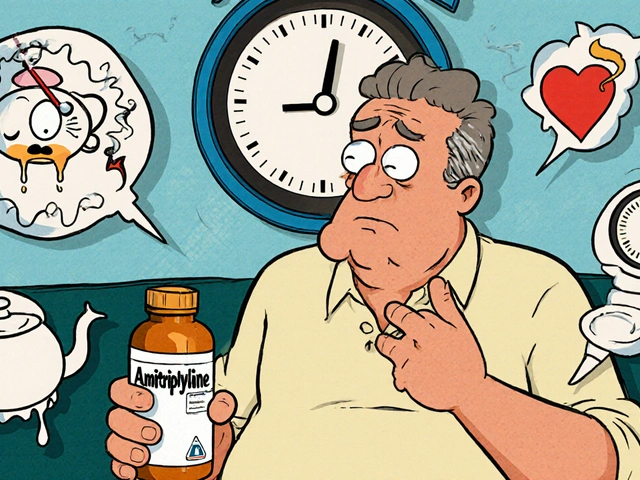
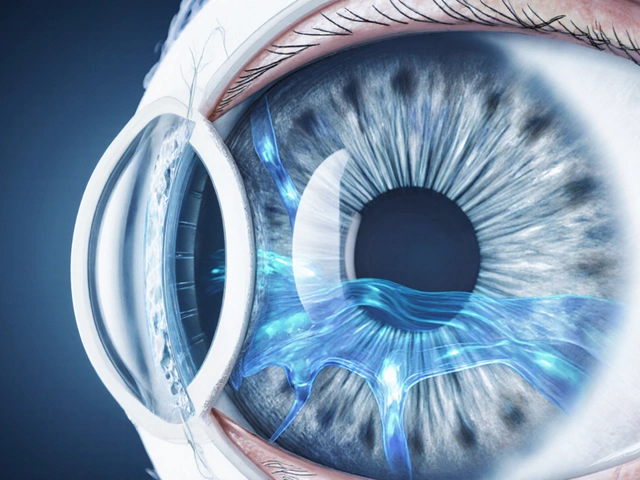

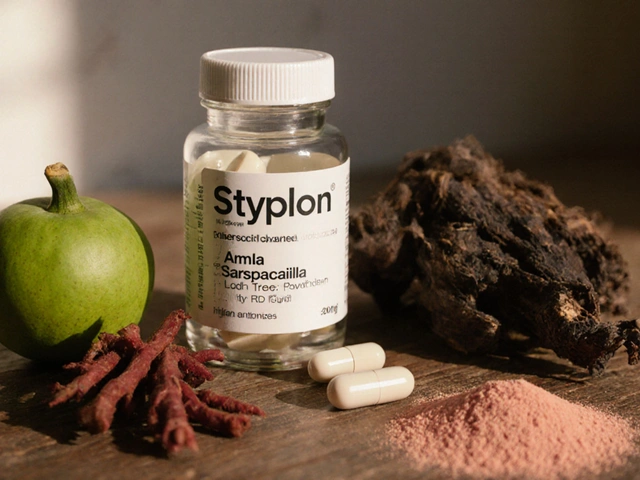
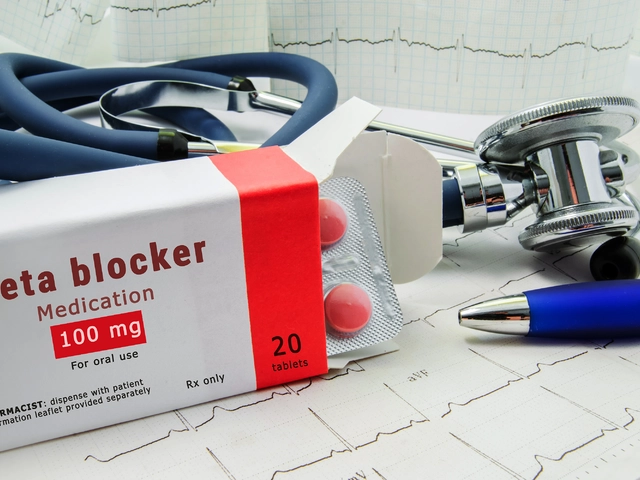
Alex Harrison
November 7, 2025 AT 01:44Pirfenidone is a beast to take. I’ve been on it for 14 months and still get nauseous if I forget food. But I’m walking my dog every morning now, which I couldn’t do before. It’s not perfect, but it’s something.
Jay Wallace
November 7, 2025 AT 10:26Why are we even talking about this? In America, we have better options-why are we settling for this half-baked drug that makes you look like you’ve been sunburned by a toaster? The FDA should’ve banned this junk years ago.
Alyssa Fisher
November 8, 2025 AT 10:03It’s interesting how we frame pirfenidone as a ‘tool’ rather than a compromise. We’re not curing anything-we’re negotiating with time. And that’s profoundly human. The real victory isn’t in slowing fibrosis-it’s in choosing to keep living while you’re doing it. The pill organizer, the sunscreen, the ginger tea-they’re all acts of quiet defiance.
Alyssa Salazar
November 9, 2025 AT 16:59Let’s be real-pirfenidone’s antifibrotic mechanism targets TGF-beta1 signaling pathways, which modulates collagen deposition via SMAD-dependent and independent cascades. But yeah, also, you’ll feel like a zombie and burn like a marshmallow. Side effect management is 70% of the battle. And no, coffee isn’t your friend here.
Beth Banham
November 9, 2025 AT 20:37I started this drug last year. I didn’t tell anyone at first. I was scared. Now I just take it with dinner, wear my hat outside, and call my sister when I’m tired. It’s not glamorous. But it’s mine.
Brierly Davis
November 10, 2025 AT 08:02You got this. I know the pill count feels insane-24 capsules a day? Yeah, no one makes it look easy. But you’re not just taking medicine-you’re building a routine that protects your future. Use the reminders. Use the pillbox. And if you burn your nose? That’s just a badge of honor. Keep going.
Amber O'Sullivan
November 10, 2025 AT 09:56They say don’t drink alcohol but I had one beer and nothing happened. Everyone’s scared of everything these days. I’m still breathing aren’t I
Jim Oliver
November 12, 2025 AT 09:43Wow. A 30% reduction in progression? That’s statistically significant, but clinically meaningless if you’re still dying. Also, you need to take 2,403 mg daily? That’s not a treatment-it’s a full-time job with side effects. Congrats, Big Pharma.
William Priest
November 13, 2025 AT 18:46Did you know pirfenidone was originally developed in Japan? And now Americans act like it’s some miracle drug? We’re just lucky it wasn’t banned by the FDA’s 8-year review cycle. Honestly, if you’re on this, you’re probably already in the top 10% of patients who even get access to real care.
Ryan Masuga
November 14, 2025 AT 03:06Been on it 11 months. Lost 8 lbs, got sunburned twice, and still took the pills. My lung function didn’t drop. That’s a win. Don’t give up. You’re doing better than you think.
Jennifer Bedrosian
November 15, 2025 AT 20:12My mom took this and ended up in the ER because her liver went crazy and then she cried for a week because she missed her grandbaby’s birthday because she was too tired. So yeah. It’s not worth it. Just sayin
Brad Seymour
November 16, 2025 AT 19:05I read all of this and I just want to say-thank you. Not just for the info, but for not sugarcoating it. My wife’s on it. We’re figuring it out. One day at a time. This helped more than the doctor’s 10-minute visit ever did.
Malia Blom
November 17, 2025 AT 15:41So you’re telling me the only reason people take this is because they’re scared of dying faster? What if we just accepted that death is inevitable? Maybe the real problem isn’t IPF-it’s our obsession with prolonging life at all costs. I mean, have you ever just… let go?